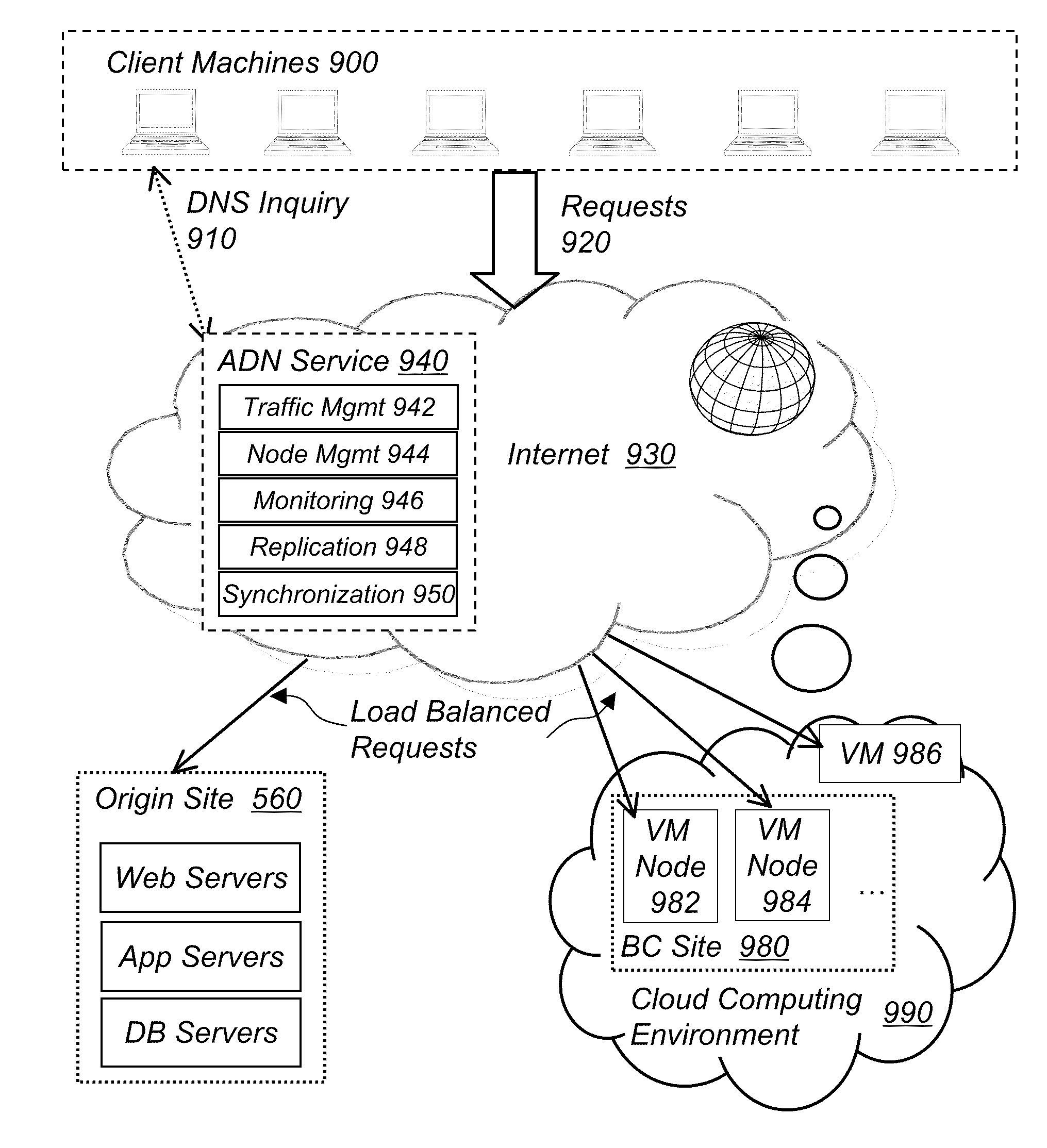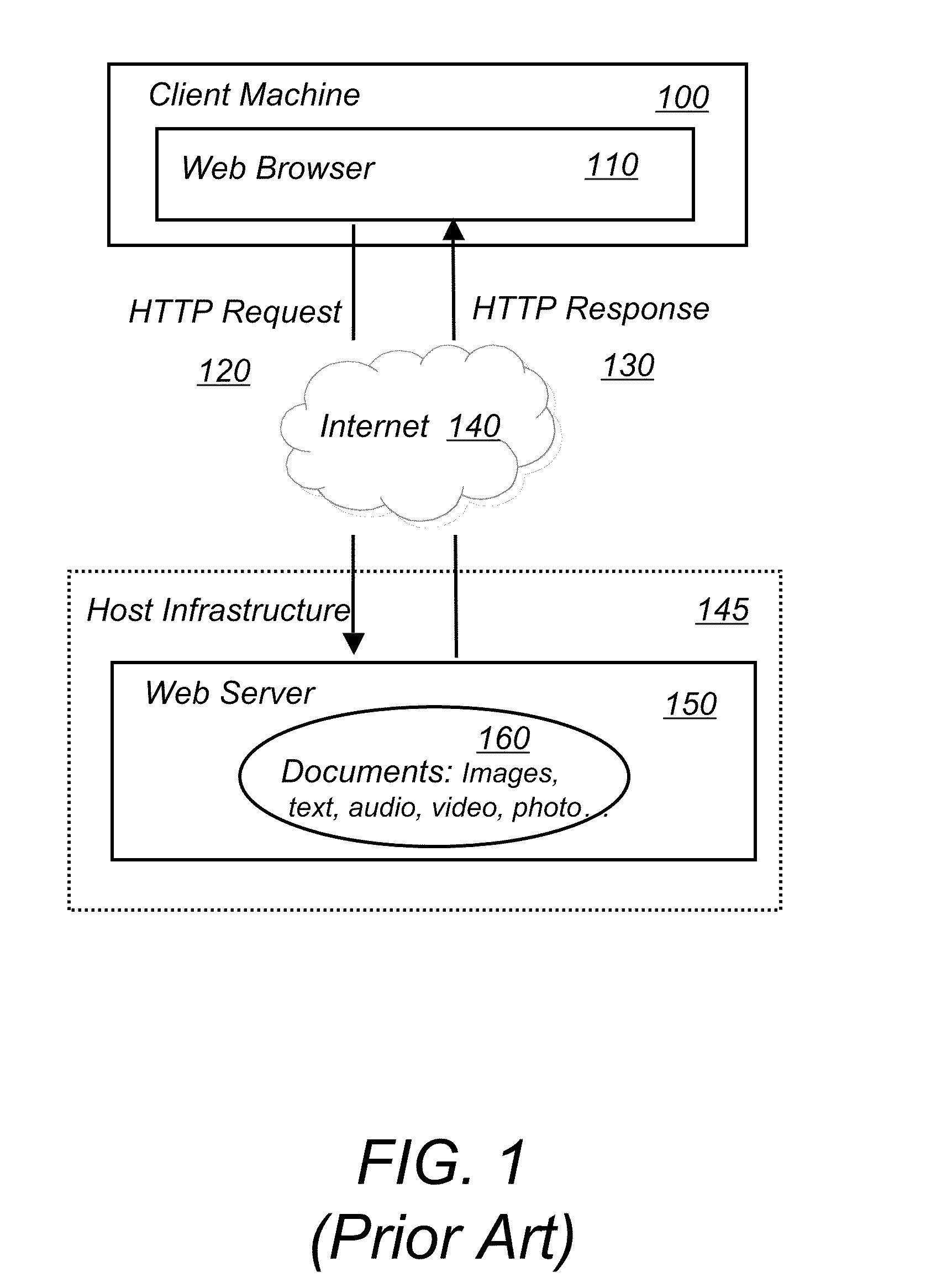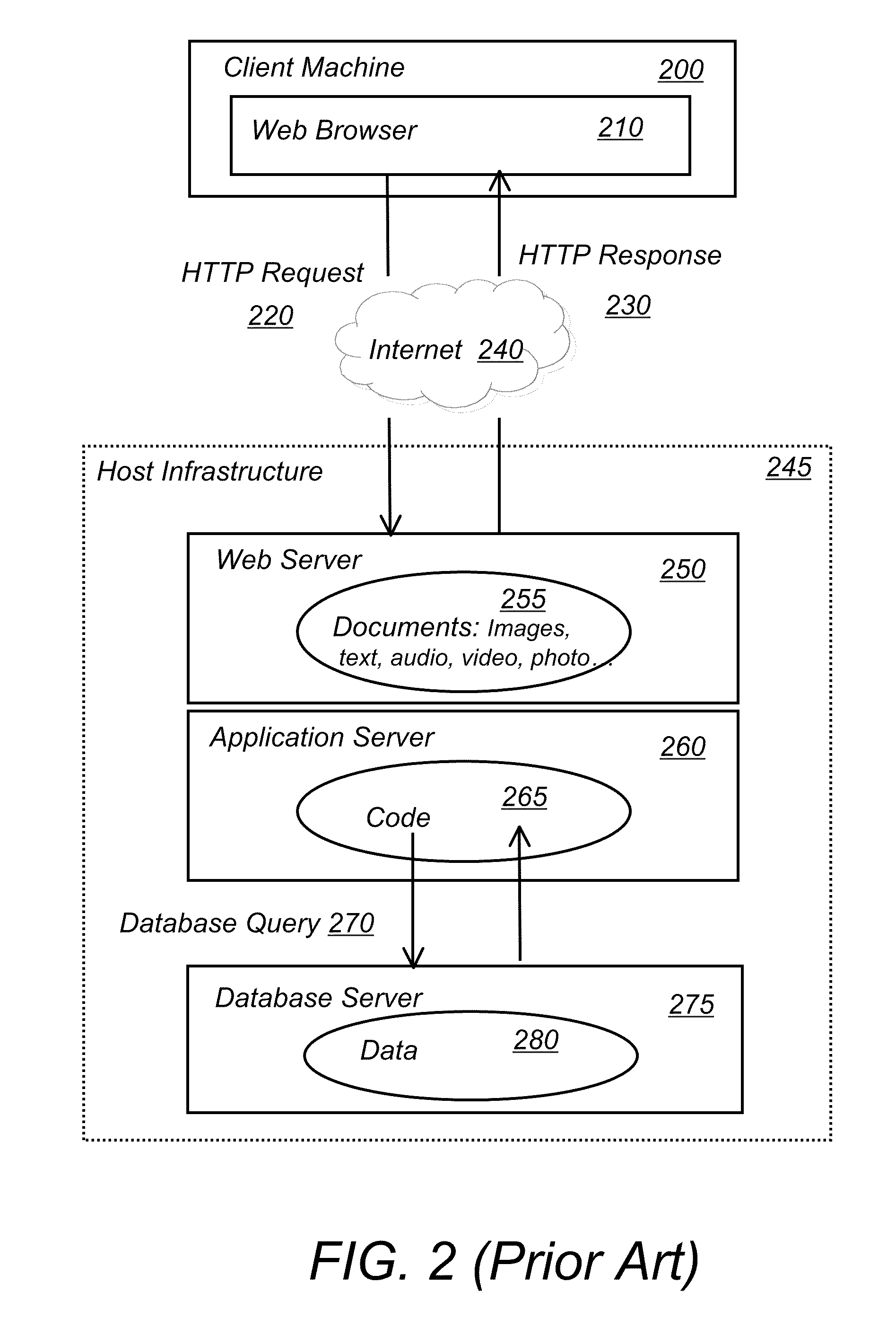System and method for performance acceleration, data protection, disaster recovery and on-demand scaling of computer applications
- Summary
- Abstract
- Description
- Claims
- Application Information
AI Technical Summary
Benefits of technology
Problems solved by technology
Method used
Image
Examples
Embodiment Construction
[0057]The present invention creates a scalable, fault tolerant system called “Application Delivery Network (ADN)”. An Application Delivery Network automatically replicates applications, intelligently deploys them to edge nodes to achieve optimal performance for both static and dynamic content, dynamically adjusts infrastructure capacity to match application load demand, and automatically recovers from node failure, with the net result of providing performance acceleration, unlimited scalability and non-stop continuity to applications.
[0058]A typical embodiment of the subject invention is to set up an “Application Delivery Network (ADN)” as an Internet delivered service. The problem that ADN solves is the dilemma between performance, scalability, availability, infrastructure capacity and cost. The benefits that ADN brings include performance acceleration, automatic scaling, edge computing, load balancing, backup, replication, data protection and archiving, continuity, and resource ut...
PUM
 Login to View More
Login to View More Abstract
Description
Claims
Application Information
 Login to View More
Login to View More - R&D
- Intellectual Property
- Life Sciences
- Materials
- Tech Scout
- Unparalleled Data Quality
- Higher Quality Content
- 60% Fewer Hallucinations
Browse by: Latest US Patents, China's latest patents, Technical Efficacy Thesaurus, Application Domain, Technology Topic, Popular Technical Reports.
© 2025 PatSnap. All rights reserved.Legal|Privacy policy|Modern Slavery Act Transparency Statement|Sitemap|About US| Contact US: help@patsnap.com



